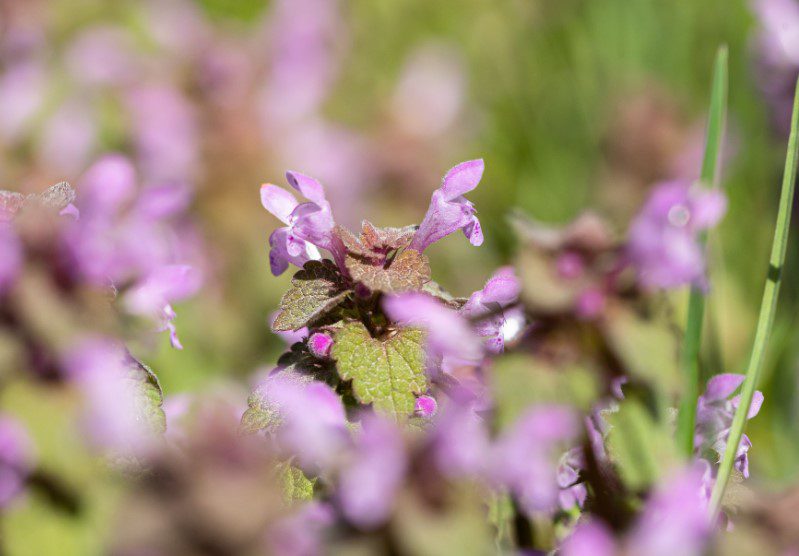Spotted Deadnettle

spotted deadnettle (Lamium maculatum L.) is a perennial flowering ornamental commonly grown as a landscape plant for an adequate ground cover.
Spotted deadnettle ground cover is an easy-to-grow plant with a wide range of soil and condition tolerance.
Select either a shady or half shady location when growing Lamium maculatum.
A critical bit of deadnettle plant info to be aware of, however, is its possible invasiveness.
The plant will spread quickly from site to site and establishes without any extra effort on your part.
So make sure you want spotted deadnettle ground cover in your garden before planting.
What is Spotted Deadnettle?
Spotted deadnettle (Lamium maculatum) grows as a spreading mat of herbaceous stems and leaves.
The small plates are dotted with spots, which brings the plant its name. It is most appealing during cooler periods and can die back when temperatures plummet high.
The Lamium maculatum blooms in late spring from May to June and produces flowers in lavender, pink, purple, and white.
Lamium maculatum ground cover grows about 6 to 12 inches (15-31 cm.) high and can spread out 2 feet (61 cm.) wide.
The attractive foliage has a silvery cast and shows well in deep shadows. Spotted deadnettle is evergreen in temperate regions and a superior performance perennial.
What are Spotted Deadnettle’s Cultivating Conditions?
Deadnettle plant info would not be complete without a discussion of the site conditions this plant requires.
If you plant it in a low light area, this hardy specimen can thrive in sandy, loamy, or even lightly clayed soils.
Lamium maculatum ground cover prefers moist soil but can perform well in a dry area.
However, the plant will die back in the hot summer heat when there is not enough moisture. Therefore, moist soils must be well-drained to promote the best growth.
How to Grow Spotted Deadnettle
Growing Lamium maculatum can be accomplished in USDA plant hardiness zones 3 to 8. However, higher heat areas are not suitable for the plant.
Lamium maculatum can be started from a seed planted out after all danger of frost has passed. The plant is also easy to grow from stem cuttings or crown division.
The stems naturally root at internodes, and these will establish as individual plants. Growing Lamium maculatum from branches is a cheap and easy way to spread this terrific shade plant.
How to Care for Spotted Deadnettles
The plant should be pinched back for a fuller, bushier look. However, the long stems are also attractive as trailing accents in a potted display if left unpinched.
Provide medium moisture and spread compost to enrich the soil around the plant’s roots. As a result, Lamium maculatum ground cover has few pest or disease problems.
The only genuine concern is damage to the ornamental leaves by slugs or snails. Use copper tape around containers and beds or an organic slug pest control product.
Even with good care of Lamium maculatum, they will die back in August or early fall.
Don’t worry. The plant will regrow in spring and produce an even thicker batch of foliage.
Give lamiums a good crew- cut once the flowers have finished along with a light dressing of compost. This will stop the long arms of L. galeobdolon from putting down roots and spreading further.
New shoots will appear and a fresh carpet will form within a few weeks. Cuttings or divisions of old clumps soon establish themselves and a reasonable area can be covered quite quickly from two or three plants.
Lamiums have been growing in gardens for centuries. With delightful old English nicknames such as red, yellow, or white archangel, depending on the flower color, dummy or blind nettle, henbit, and best of all, weasel snout, (although this can also refer to another plant) it is hard to resist having it in the garden.























Comments are closed.